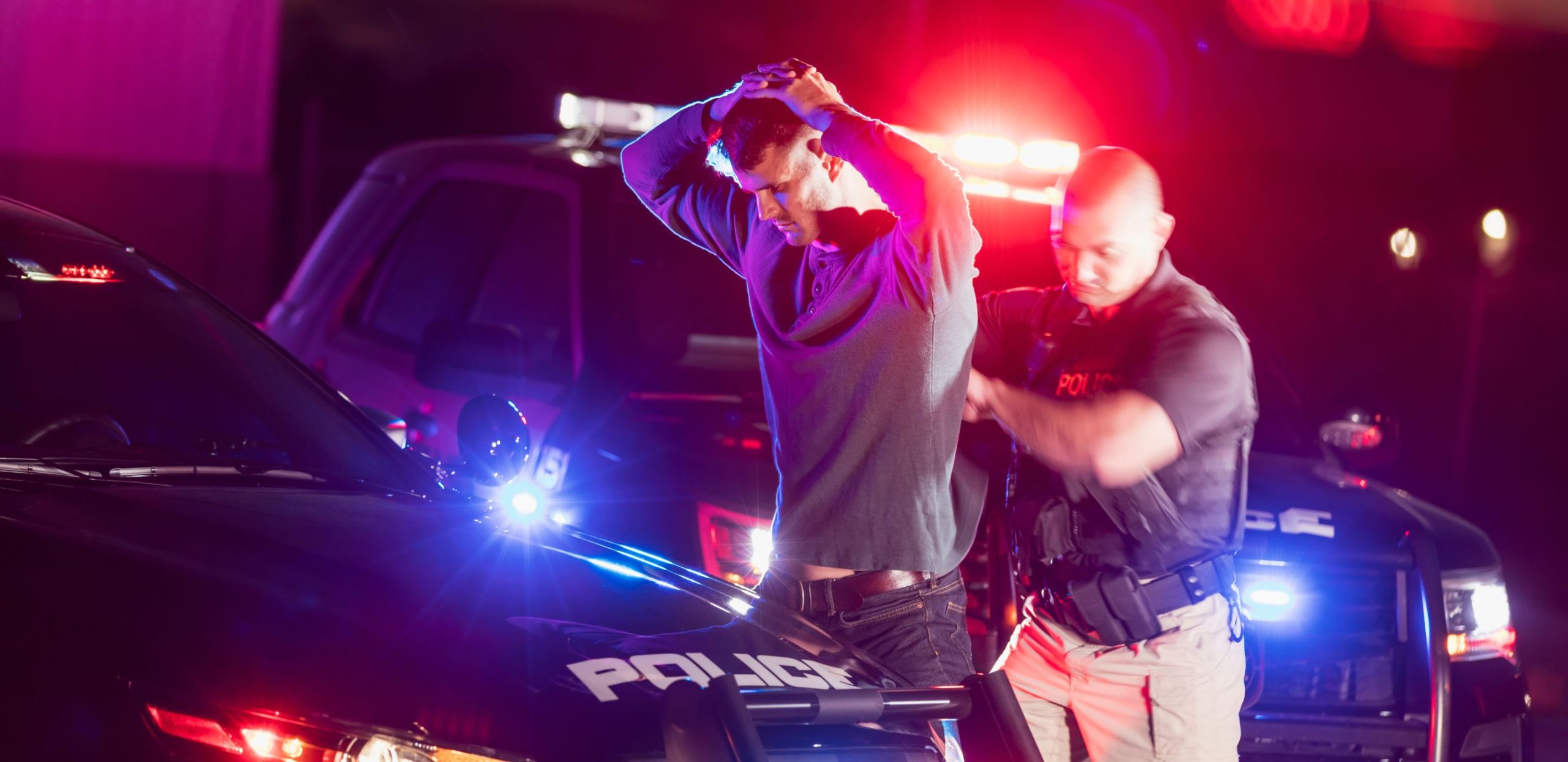Assault with deadly weapon
Assault with a deadly weapon, firearm, or force likely to produce great bodily harm in California: Penal Code Section 245 and the multiple subsections.
As discussed in another section, assault is a criminal offense in California under Penal Code Section 240 (“PC 240”). Penal code section 245 (“PC 245”) outlines more specific and serious types of assault in California law, which involve the commission of an assault with the use of a deadly weapon, firearm, or particularly severe force that is likely to result in great bodily injury.
“Assault” is a word that can mean many different things in different jurisdictions. Many states use “assault” to describe different types of crimes. Even though they usually all involve some type of crime of violence against other persons, you should be careful to see exactly what type of behavior an assault statute criminalizes when preparing a defense in an assault case.

How does the prosecution prove a charge of Assault with a deadly weapon, a firearm, or force likely to produce great bodily injury?
First, the prosecution has to prove all of the elements of assault, beyond a reasonable doubt. These are:
1-That the defendant unlawfully committed an act which tends to probably and directly result in the application of force to another person, AND
2-The defendant did, in fact, have the ability to inflict a violent injury on another person,
In addition, to convict the defendant of a more specific type of assault under PC 245, the prosecution must prove beyond a reasonable doubt that:
- The defendant used a deadly weapon other than a firearm,
- The defendant used a firearm, OR
- The defendant used force likely to produce great bodily harm.
Whichever of these three is charged and proven will affect which type of assault under PC 245 applies, and this, in turn, will affect the types of punishment possible (see below section).
If, after hearing all of the evidence, a jury has reasonable doubt as to any one of the above elements, then the defendant will be found “not guilty” of assault under PC 245.
It also does not matter whether the victim was actually injured. Assault criminalizes certain types of behavior that threaten force on others, but not necessarily the application of force itself. Where force is actually applied to the victim, the crime is usually charged as a battery instead. For this reason, sometimes assault is referred to as an “attempted battery.”
A “deadly weapon” can be any object that is used in a manner to cause death or serious injury, which is also capable of causing such injury when used that way. Large knives easily count under this category, but so can certain tools or sports equipment when used in a certain way. An unloaded gun could also count as a deadly weapon if it is used to club someone, as could a pencil when used to stab someone in a certain way. It is at least clear, however, that a “deadly weapon” is extrinsic to the defendant themselves. Fists and feet, then, will not count as “deadly weapons” under PC 245. However, the use of one’s physical prowess can still count as a type of assault with force “likely to produce great bodily harm”, in some circumstances. For example, if a professional boxer were to throw punches at the victim aggressively, this might count as an assault under PC 245 “with force likely to produce great bodily injury”, because of the defendant’s level of training and his wilfully threatening behavior.
Possible defenses to a charge of assault with a deadly weapon, a firearm, or with force likely to produce great bodily harm.
As with most criminal charges, an assault charge under PC 245 can be defended by showing that the charged crime might never have happened. A good defense should explore whether the prosecution witnesses are credible. For example, do they make any inconsistent statements? Do they have any motive to lie? Does physical evidence corroborate their version of events? Is there any evidence worth exploring that police may have missed, such as video or eyewitness testimony? All of these avenues should be explored thoroughly when preparing a defense of a charge under PC 245, or any assault charge for that matter.
Another defense to an assault charge under PC 245, common to other types of charges of physical violence, is self-defense and defense of others. If the defense can show that the “assaultive conduct” was justified in defense of one’s self or defense of others, then the jury will find the defendant “not guilty” of assault.
Conduct that is otherwise assaultive is lawful if 1-The defendant reasonably believed that force or violence was necessary to prevent imminent bodily harm to themselves or others, 2-the defendant reasonably felt threatened, or felt that others were threatened and 3-the defendant used no more force than was reasonably necessary under the circumstances.
Two important things are worth noting: first, a successful argument for self-defense or defense of others does not require any proof that the defendant was “actually” threatened by the victim. All that is required is that the defendant “reasonably believe” that the victim was behaving in a way that threatened the defendant or others. For example, if someone were to approach the defendant with an unloaded gun just to frighten them or play a joke, the defendant might “reasonably believe” that they were being threatened even though the gun was unloaded and was never going to hurt the defendant.
Secondly, note that the defense does not have to completely “prove” each element of self-defense or defense of others to succeed. Once the defense fairly raises the issue, the burden turns to the prosecutor to disprove each element of self-defense or defense of others. If, after hearing all of the evidence, the jury has reasonable doubt on the lack of any element of self-defense or defense of others, then they will find the defendant “not guilty.” What this means is that the defense does not have to completely convince the jury that they were justified in self-defense or defense of others, they need only raise reasonable doubt that they were not.
As explained above, the prosecution does not have to prove that the defendant “intended” to harm or assault the victim in an assault case. Still, the prosecution must show that the defendant acted wilfully. If the prosecution cannot show that the defendant, with voluntary movements, acted in such a way where they knew or should have known that the victim would be threatened, then this will be a “not guilty” verdict. For example, if someone is in a store admiring an antique knife, and then is suddenly pushed from behind into a crowd of people while still holding the knife, the people in that crowd might very reasonably feel threatened. But this would not be an “assault” because the defendant did not act wilfully; he only “threatened” the crowd members because he was pushed into them.
Possible punishment and sentenced for Assault under PC 245.
1-That the defendant unlawfully committed an act which tends to probably and directly result in the application of force to another person AND
2-The defendant did, in fact, have the ability to inflict a violent injury on another person
In addition, to convict the defendant of a more specific type of assault under PC 245, the prosecution must prove beyond a reasonable doubt that
- The defendant used a deadly weapon other than a firearm,
- The defendant used a firearm, OR
- The defendant used force likely to produce great bodily harm.
Whichever of these three is charged and proven will affect which type of assault under PC 245 applies, and this, in turn, will affect the types of punishment possible (see below section).
If, after hearing all of the evidence, a jury has reasonable doubt as to any one of the above elements, then the defendant will be found “not guilty” of assault under PC 245.
Assault with a firearm, other than a semiautomatic or assault weapon, is a “wobbler” and can be punished by state incarceration for 2, 3, or 4 years, or by imprisonment in county jail for 6-12 months, or by a $10,000 fine, or by both fines and incarceration. When the victim is a peace office or firefighter, however, the charge is always a felony and the possible punishments are four, six, or eight years.
Assault with a semi-automatic firearm is always punished as a felony and is punishable by state incarceration for three, four, or five years. Again, the crime is treated more seriously when the victim is a peace office or firefighter, and in those cases the charge is punishable by state incarceration for five, seven, or nine years.
This type of assault is punished most severely than others in PC 245. It is punishable by state incarceration for 4, 8, or 12 years. When the victim is a peace officer or firefighter, then the possible punishments are 6, 9, or 12 years of state incarceration.
Clips of Counsel: Watch and Learn
“Daniel Vaswani, lead attorney at Virtuoso Criminal and DUI Lawyers, explains the complicated process of a DUI arrest and the importance of hiring the right lawyer.”
“Attorney Joe McPeak from Virtuoso Criminal and DUI Lawyers discusses important defense strategies for domestic violence cases.”
“Discover how speaking with an attorney just days before your court date can dramatically impact your chances of release.“
We are Available
Do You Have a Case?
Get free evaluation
Lorem ipsum dolor sit amet, consectetur adipiscing elit. Ut elit tellus, luctus nec ullamcorper mattis, pulvinar dapibus leo.




